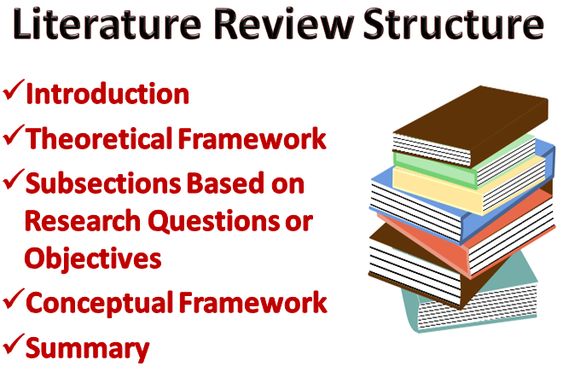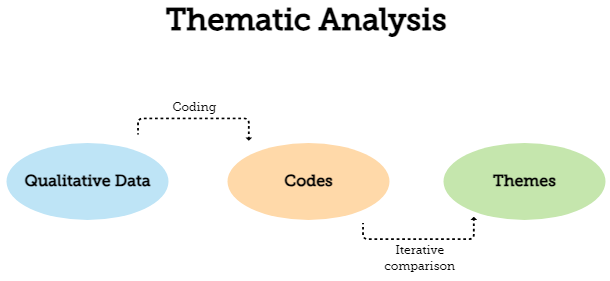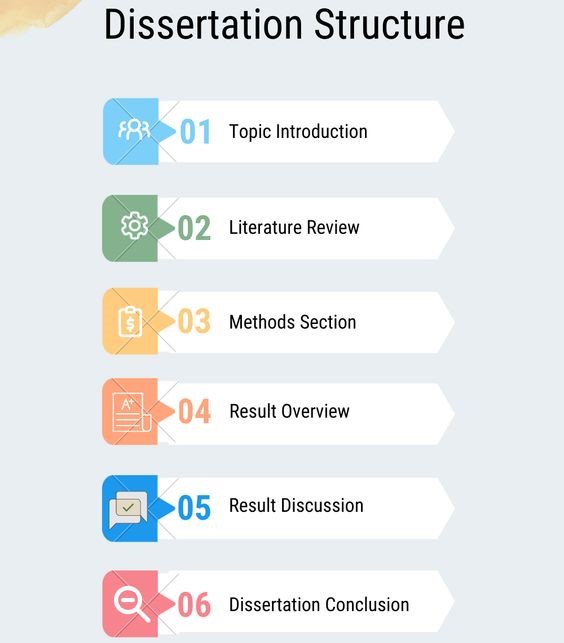
Table of Contents
Embarking on a nursing dissertation is a monumental endeavor, requiring not only deep knowledge of the field but also meticulous planning and organization. A well-crafted nursing dissertation outline serves as the bedrock of a successful dissertation, providing a clear roadmap for your research journey. It acts as a compass, guiding you through the intricacies of your topic, ensuring logical flow, and ultimately, facilitating the production of a coherent and impactful dissertation.
This comprehensive guide will equip you with the tools and strategies necessary to craft a stellar nursing dissertation outline that sets you up for success. We will delve into the essential components of a robust outline, explore various structural approaches, and provide practical tips for maximizing its effectiveness.
Understanding the Purpose of a Nursing Dissertation Outline
The nursing dissertation outline is more than just a list of topics; it’s a dynamic framework that:
- Defines the scope of your research: By clearly outlining your research questions, objectives, and methodology, the outline clarifies the boundaries and focus of your dissertation.
- Ensures logical progression: It establishes a coherent flow of ideas, connecting each section to the central theme and guiding the reader through your argument.
- Provides a structured roadmap: The outline acts as a checklist, helping you stay organized and track your progress throughout the research and writing process.
- Facilitates efficient writing: With a clear outline in place, the actual writing process becomes more streamlined, minimizing confusion and redundancy.
The Building Blocks of a Stellar Nursing Dissertation Outline
A well-structured nursing dissertation outline comprises several key components, each playing a crucial role in establishing a solid foundation for your research:
1. Introduction
- Hook: Start with a captivating statement that immediately grabs the reader’s attention and establishes the relevance of your research.
- Background: Briefly present the current state of knowledge in your chosen field, highlighting gaps and controversies that your research aims to address.
- Research problem: Clearly state the specific problem or issue that your dissertation will investigate.
- Research questions: Formulate clear and concise research questions that guide your investigation and provide a framework for analyzing your findings.
- Objectives: Define the specific goals you intend to achieve through your research, outlining what you aim to discover and contribute to the field.
- Significance: Explain why your research is important and how it will contribute to nursing knowledge, practice, or policy.
- Scope and limitations: Define the boundaries of your research, outlining the specific population, time frame, and context you will be studying. Acknowledge any limitations that may impact the generalizability of your findings.
2. Literature Review
- Conceptual framework: Define the theoretical framework underpinning your research, explaining how it guides your approach and interpretation of findings.
- Existing research: Summarize relevant studies conducted on your chosen topic, highlighting key findings, methodologies, and gaps in the literature.
- Critical analysis: Evaluate the existing literature, identifying strengths, weaknesses, and inconsistencies.
- Synthesis: Draw connections between different studies and identify areas of consensus and disagreement.
- Contribution to the field: Emphasize how your research addresses the gaps and limitations identified in the literature review.

3. Methodology
- Research design: Describe the chosen research design, justifying its suitability for answering your research questions.
- Participants: Define the characteristics of your participants, specifying how they were recruited and the criteria used for inclusion and exclusion.
- Data collection methods: Outline the specific methods used for collecting data, providing detailed information about instruments, procedures, and data sources.
- Data analysis methods: Explain the statistical or qualitative techniques employed to analyze your data, justifying their appropriateness for answering your research questions.
- Ethical considerations: Discuss any ethical challenges encountered and the measures taken to ensure responsible research conduct.
4. Results
- Presentation of findings: Present your research findings in a clear and concise manner, using tables, figures, and descriptive narratives.
- Interpretation of findings: Explain the meaning and significance of your findings in relation to your research questions and existing literature.
- Statistical analysis: Present statistical results, including significance levels, effect sizes, and confidence intervals.
- Qualitative data analysis: Describe the themes, categories, and patterns identified through qualitative data analysis.
5. Discussion
- Discussion of findings: Connect your research findings to the existing literature, highlighting similarities, differences, and potential implications.
- Implications for nursing practice: Discuss the practical implications of your findings, suggesting how they can inform nursing practice, education, or policy.
- Limitations of the study: Acknowledge any limitations that may have influenced your findings and their generalizability.
- Recommendations for future research: Identify areas for further research that emerged from your findings.
6. Conclusion
- Summary of key findings: Concisely summarize the most important findings of your research.
- Contribution to the field: Reiterate the significance of your research and how it contributes to nursing knowledge.
- Final thoughts: Offer a final reflection on the overall research journey and potential future directions.
Strategies and Tips for Crafting a Winning Nursing Dissertation Outline
- Start early: Begin outlining your dissertation as soon as you have a clear research idea. This allows ample time for revisions and ensures a strong foundation for your research.
- Be specific: Avoid vague or general statements in your outline. Instead, use precise language to clearly define your research questions, objectives, and methods.
- Think critically: Continuously evaluate your outline, ensuring each section is logically connected and contributes to the overall argument of your dissertation.
- Seek feedback: Share your nursing dissertation outline with your supervisor, colleagues, or peers for valuable feedback and suggestions.
- Stay flexible: Be prepared to adjust your nursing dissertation outline as your research progresses, accommodating new insights and findings.
Choosing the Right Structure for Your Nursing Dissertation Outline
There are various structural approaches for your nursing dissertation outline. Choose the format that best aligns with your research topic, methodology, and personal preferences:
- Linear approach: This traditional structure follows a logical progression from introduction to conclusion, providing a clear and straightforward framework.
- Problem-solution approach: This structure focuses on identifying a specific problem, exploring potential solutions, and evaluating their effectiveness.
- Comparative approach: This structure examines two or more contrasting perspectives, theories, or interventions, highlighting their similarities, differences, and implications.
- Thematic approach: This structure organizes chapters around specific themes or concepts, allowing for a more holistic and integrated analysis.

Example of a Nursing Dissertation Outline
To illustrate the practical application of these concepts, let’s consider a hypothetical nursing dissertation outline focusing on the impact of a new pain management intervention for patients with chronic back pain:
Introduction:
- Hook: The prevalence of chronic back pain and its significant impact on quality of life.
- Background: Brief overview of current pain management approaches for chronic back pain and their limitations.
- Research problem: Lack of evidence-based interventions specifically tailored for chronic back pain.
- Research questions:
- Does the new pain management intervention result in improved pain scores compared to standard care?
- How does the new intervention impact patients’ functional abilities and overall well-being?
- Objectives: To evaluate the effectiveness and impact of the new pain management intervention for patients with chronic back pain.
- Significance: The potential for improved pain management and quality of life for patients with chronic back pain.
- Scope and limitations: Study population, intervention duration, and geographical location.
Literature Review:
- Conceptual framework: The biopsychosocial model of pain, emphasizing the interplay of biological, psychological, and social factors.
- Existing research: Review of previous studies on pain management interventions for chronic back pain, including pharmacological and non-pharmacological approaches.
- Critical analysis: Analysis of the strengths and weaknesses of existing interventions and their effectiveness.
- Synthesis: Identification of gaps in the literature and the need for a new, evidence-based intervention.
- Contribution to the field: The potential of the new intervention to address identified gaps and contribute to improved pain management practice.
Methodology:
- Research design: Randomized controlled trial with a control group receiving standard care and an experimental group receiving the new intervention.
- Participants: Adult patients with chronic back pain recruited from a community health center.
- Data collection methods: Pain questionnaires, functional ability scales, and quality of life measures administered at baseline and follow-up.
- Data analysis methods: Statistical analysis of quantitative data, including t-tests and ANOVA.
- Ethical considerations: Informed consent, participant confidentiality, and data security.
Results:
- Presentation of findings: Statistical analysis of pain scores, functional abilities, and quality of life measures at baseline and follow-up.
- Interpretation of findings: Interpretation of statistical results in relation to the research questions.
- Statistical analysis: Detailed presentation of t-test and ANOVA results, including significance levels, effect sizes, and confidence intervals.
Discussion:
- Discussion of findings: Comparison of the new intervention to standard care, highlighting significant differences in pain scores, functional abilities, and quality of life.
- Implications for nursing practice: Potential application of the new intervention in clinical settings and its contribution to evidence-based practice.
- Limitations of the study: Potential limitations related to sample size, recruitment procedures, and intervention duration.
- Recommendations for future research: Suggestions for further research to explore the long-term effectiveness and cost-effectiveness of the new intervention.
Conclusion:
- Summary of key findings: Concise summary of the main findings related to the effectiveness and impact of the new intervention.
- Contribution to the field: Reiteration of the significance of the research and its contribution to the field of pain management.
- Final thoughts: Reflection on the potential for the new intervention to improve the lives of patients with chronic back pain and the importance of ongoing research in this area.
Avoiding Common Mistakes in Nursing Dissertation Outlines
Creating a robust nursing dissertation outline is crucial for a successful dissertation. Many students fall prey to common errors that can derail their research. Here’s a breakdown of some pitfalls to avoid:
1. Lack of Focus and Clarity:
- Mistake: A vague or overly broad topic that fails to provide a clear direction for the research.
- Solution: Clearly define your research question and objectives. Ensure your nursing dissertation outline reflects a specific and focused research problem within a relevant nursing field.
2. Inadequate Literature Review:
- Mistake: Failing to adequately review existing literature, resulting in an incomplete or inaccurate understanding of the research topic.
- Solution: Conduct a comprehensive literature search and critically analyze relevant studies. Your nursing dissertation outline should include a detailed plan for your literature review, mapping out sources, key themes, and arguments.
3. Insufficient Methodology:
- Mistake: A poorly designed research methodology that lacks rigor and cannot answer the research question.
- Solution: Choose a research approach (qualitative, quantitative, mixed methods) that aligns with your research question and objectives. Detail your methodology, including data collection methods, sampling techniques, and data analysis procedures in your nursing dissertation outline.
4. Weak Research Questions:
- Mistake: Using vague or unanswerable research questions, making it challenging to collect meaningful data.
- Mistake: Focusing on trivial or irrelevant questions.
- Solution: Develop clear and concise research questions that are directly related to your chosen topic and can be answered through your research. Revisit and refine these questions in your nursing dissertation outline to ensure they drive your research.
5. Unrealistic Timeline:
- Mistake: Creating a timeline that is unrealistic or insufficient to complete all the research stages.
- Solution: Break down your research into manageable tasks and allocate realistic timeframes for each. Develop a detailed timeline within your nursing dissertation outline to guide your progress and ensure timely completion.
6. Lack of Structure and Organization:
- Mistake: A disorganized or poorly structured nursing dissertation outline that lacks a logical flow and fails to clearly communicate the research plan.
- Solution: Develop a clear and logical structure for your nursing dissertation outline, using headings and subheadings to guide the reader through your research plan.
7. Insufficient Justification for Research:
- Mistake: Failing to justify why the research is important and relevant to the field of nursing.
- Solution: Clearly articulate the significance and impact of your research. Highlight the potential benefits and implications for nursing practice, education, or policy within your nursing dissertation outline.
Frequently Asked Questions About Nursing Dissertation Outline
- What is the purpose of a nursing dissertation outline?
A nursing dissertation outline serves as a roadmap for your research, providing a clear structure for your entire dissertation. It helps you organize your thoughts, ensure a logical flow of ideas, and identify any gaps in your research. - What are the essential elements of a nursing dissertation outline?
A typical nursing dissertation outline includes sections such as the introduction, literature review, methodology, findings, discussion, and conclusion. The specific sections may vary based on your research topic and methodology. - How detailed should my nursing dissertation outline be?
The level of detail in your nursing dissertation outline depends on your preference and the complexity of your research. It can range from a simple list of main sections to a more detailed outline with subheadings and supporting evidence. - How can I create a strong nursing dissertation outline?
Creating a strong nursing dissertation outline requires a thorough understanding of your research topic, a clear research question, and a well-defined methodology. It’s also important to consult with your advisor and review similar dissertations in your field. - What are the benefits of using a nursing dissertation outline?
Using a nursing dissertation outline can help you:- Organize your thoughts and research
- Identify gaps in your research
- Stay on track with your writing
- Improve the clarity and coherence of your dissertation
- How often should I revise my nursing dissertation outline?
You should revise your nursing dissertation outline as needed throughout the research process. As you gather data and refine your ideas, it’s essential to update your outline to reflect these changes. - What are some common mistakes to avoid when creating a nursing dissertation outline?
Some common mistakes to avoid include:- Lack of clarity in your research question
- Inadequate research to support your claims
- Insufficient detail in your outline
- Failure to revise your outline as you progress
- How can I find examples of nursing dissertation outlines?
You can find examples of nursing dissertation outlines online, in libraries, or by consulting with your advisor. - What are some tips for creating a strong nursing dissertation outline?
Tips for creating a strong nursing dissertation outline include:- Start early and allow plenty of time for revisions
- Be clear and concise in your writing
- Use headings and subheadings to organize your thoughts
- Include specific details and supporting evidence for each section
- Get feedback from your advisor and peers
- Is it necessary to follow a specific format for my nursing dissertation outline?
While there is no one-size-fits-all format for a nursing dissertation outline, it’s important to ensure that your outline follows the guidelines established by your university or department. Consulting with your advisor can help you determine the appropriate format for your research.
Creating a clear and detailed nursing dissertation outline is crucial for successful dissertation writing. By following these tips and considering these frequently asked questions, you can develop a solid foundation for your research and ensure a smooth writing process. Remember, your nursing dissertation outline is a living document that should be revised and updated as you progress through your research.

A well-crafted nursing dissertation outline is essential for a successful dissertation. By avoiding these common mistakes, you can ensure your outline provides a clear, focused, and robust framework for your research. This will help you stay on track, manage your time effectively, and produce a high-quality dissertation.
A stellar nursing dissertation outline is not just a tool for organization but a crucial stepping stone towards achieving your research goals. By meticulously planning and crafting your outline, you lay a solid foundation for a compelling and impactful dissertation that will contribute to the field of nursing and advance the science of care.
Get Professional Nursing Dissertation Writing Service
Dissertation writing can be an overwhelming assignment that also requires a lot of time to complete. But, why go through all that stress when you can simply order an original nursing dissertation from PhD Nurse Writer. We offer customized nursing dissertation writing service, tailored to your specific instructions and goals. Besides, our writers can also assist you with writing nursing research papers, case studies and essays.





